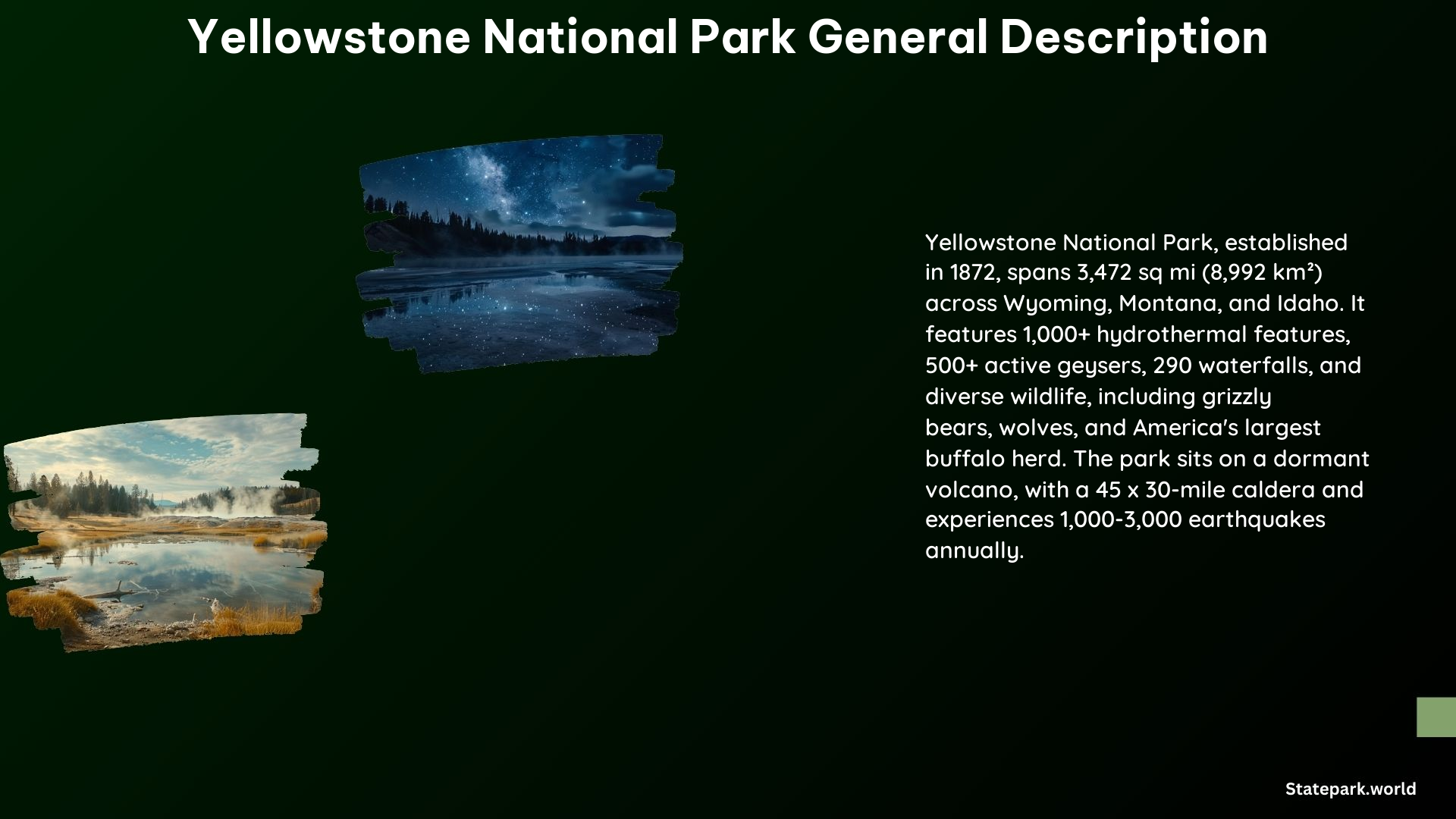Yellowstone National Park is a vast and diverse natural wonder that has captivated visitors for over a century. As the world’s first national park, Yellowstone offers a unique blend of geological, ecological, and cultural attractions that make it a must-visit destination for outdoor enthusiasts and nature lovers alike.
Establishment and Location
Yellowstone National Park was established on March 1, 1872, making it the oldest national park in the United States. The park is primarily located in the northwestern corner of Wyoming, with portions extending into Montana and Idaho. Spanning nearly 3,500 square miles (8,992 square kilometers), Yellowstone is one of the largest national parks in the country.
Diverse Geography

Yellowstone’s geography is characterized by a diverse range of landscapes, including towering mountains, dense forests, pristine lakes and rivers, and a remarkable array of geothermal features. The park’s elevation ranges from around 5,000 feet (1,524 meters) in the valleys to over 13,000 feet (3,962 meters) in the high peaks of the Absaroka and Beartooth mountain ranges.
Geothermal Wonders
One of Yellowstone’s most distinctive features is its abundance of geothermal activity. The park is home to more than 10,000 hydrothermal features, including over 500 active geysers, making it the largest concentration of geysers in the world. These geothermal wonders, such as the iconic Old Faithful geyser, are a testament to the park’s volcanic origins and ongoing geological processes.
Diverse Wildlife
Yellowstone is also renowned for its diverse and abundant wildlife. The park is home to 67 species of mammals, including iconic species like the grizzly bear, gray wolf, and bison. Additionally, Yellowstone boasts 285 species of birds and 16 species of fish, making it a haven for wildlife enthusiasts.
Vegetation and Ecosystems
The park’s vegetation is equally diverse, with nine species of conifers, over 1,000 species of native flowering plants, and 186 species of lichens. Yellowstone’s ecosystems range from high-elevation alpine tundra to low-elevation grasslands and forests, each supporting a unique array of plant and animal life.
Cultural Significance
Yellowstone’s significance extends beyond its natural wonders, as the park also holds important cultural and historical value. The park has been home to numerous Native American tribes for thousands of years, and it contains over 1,800 known archaeological sites. Yellowstone also features numerous historic buildings and landmarks, reflecting the park’s long and storied history.
Visitor Experiences
Yellowstone National Park offers a wide range of visitor experiences, from scenic drives along the iconic Grand Loop Road to backcountry hiking and camping. The park has 11 visitor centers, museums, and contact stations, as well as nine hotels and lodges, seven NPS-operated campgrounds, and five concession-operated campgrounds, providing ample opportunities for visitors to explore and enjoy the park.
Significance and Designations
Yellowstone’s significance as the world’s first national park has been recognized globally. The park was designated a UNESCO biosphere reserve in 1976 and a World Heritage site in 1978, acknowledging its unique natural and cultural importance. Yellowstone’s pioneering role in the national park system and its continued status as a premier natural and cultural destination make it a must-visit for national park enthusiasts.
References:
– https://www.yellowstone.org/experience/visitor-information/yellowstone-national-park-facts/
– https://www.britannica.com/place/Yellowstone-National-Park
– https://www.nationalgeographic.com/travel/national-parks/article/yellowstone-national-park
– https://www.nps.gov/yell/planyourvisit/basicinfo.htm
– https://www.nationalparks.org/explore/parks/yellowstone-national-park
